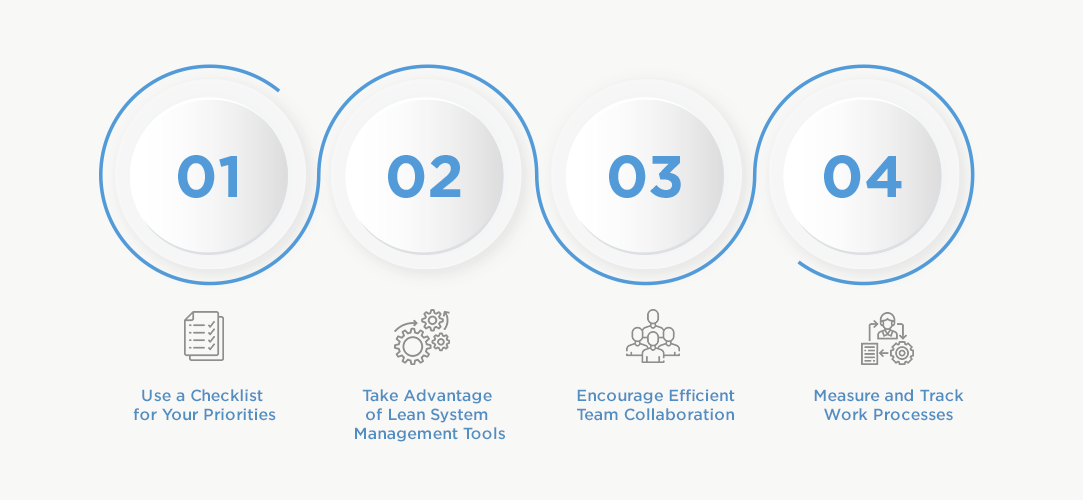Here at LegalMatch Philippines (LMPH), our employees diligently use lean production practices in their tasks as part of our conscious effort to prevent or reduce inefficiency and waste in the workplace. Many of our employees are regularly using these practices which have resulted in better productivity and efficiency for them. Here are some of our successful lean methodology practices and tips on how you can apply them in your workplace.
1. Use a Checklist for Your Priorities

A good lean thinking practice is listing down the priorities you need to do and finish within the week. From the list, identify top three priorities that you need to accomplish each day. If a task is too big, break it down into smaller sub-tasks which are more manageable.
A specific lean methodology practice for task listing is using a checklist consisting of a series of steps that you need to do to accomplish your tasks. Use it to keep things organized by scheduling the daily and weekly tasks you need to complete and easily check off the items that are done. Using the checklist helps you to swiftly identify the items that are facing delays and to pinpoint any steps you might have missed that are causing the roadblocks.
2. Take Advantage of Lean System Management Tools

An important part of a good lean thinking practice is using efficient project management tools. You should choose the right project management tools that are relevant for the specific lean production system practices you are using for your work processes.
One of the effective lean process management tools we use at LMPH is web-based Kanban boards – a visual representation of work items on a board shared with the team. If you’re a team leader or project manager, you can use a visual board to help you see the progress of your team’s tasks and streamline the process for them.
With the shared Kanban board, you can make a smooth transition of a work status such as a task going from “To do, in progress, for review and done”. Using the visual board helps you to easily identify who are facing any issues with their work. You can use the tool to pick out the people without any issues and have a light workload so you can re-assign them to the projects that need more assistance. This effectively prevents other members from being overburdened with tasks they can’t complete.
3. Encourage Efficient Team Collaboration

A lean concept of teamwork that emphasizes efficient collaboration allows the group to closely work together to accomplish a project. If you lead a team, you can:
- Equitably delegate tasks to all members with clear instructions on what to do.
- Keep an open communication line with each member.
- Encourage each member to utilize their skills to their full potential.
- Get inputs from each member on problem solving and encourage them to jointly come up with the best solution.
4. Measure and Track Work Processes

Documenting the work processes that you use in your lean system management practices helps you to pinpoint the procedure that works, needs improvement and what doesn’t work at all. An example is a comprehensive spreadsheet that measures and tracks the workflows of a project.
Documentation helps you identify the work process that doesn’t directly create any value to the project. When you efficiently measure your work processes, you can identify and understand the workflow that needs improvement so you can come up with the solution for that workflow.
Benefits of Using Lean System Management Practices

Using a checklist organizes the procedures you need to accomplish your tasks and helps to pinpoint items in the list that are facing delays. Kanban, JIRA and other collaboration or management tools help you optimize lean process practices by reducing the time allocated for repetitive tasks. Efficient team collaboration provides your group with better focus and cooperation. Clear documentation of process improvements helps you to effectively evaluate the results of the improvements you implemented.
These lean process improvement practices have produced beneficial outcomes in LMPH and also worked for other companies. There’s no limit to how many practices you can try to be more efficient in the workplace. But focusing on those four that we have mentioned will surely make small incremental improvements that can build momentum over time.
